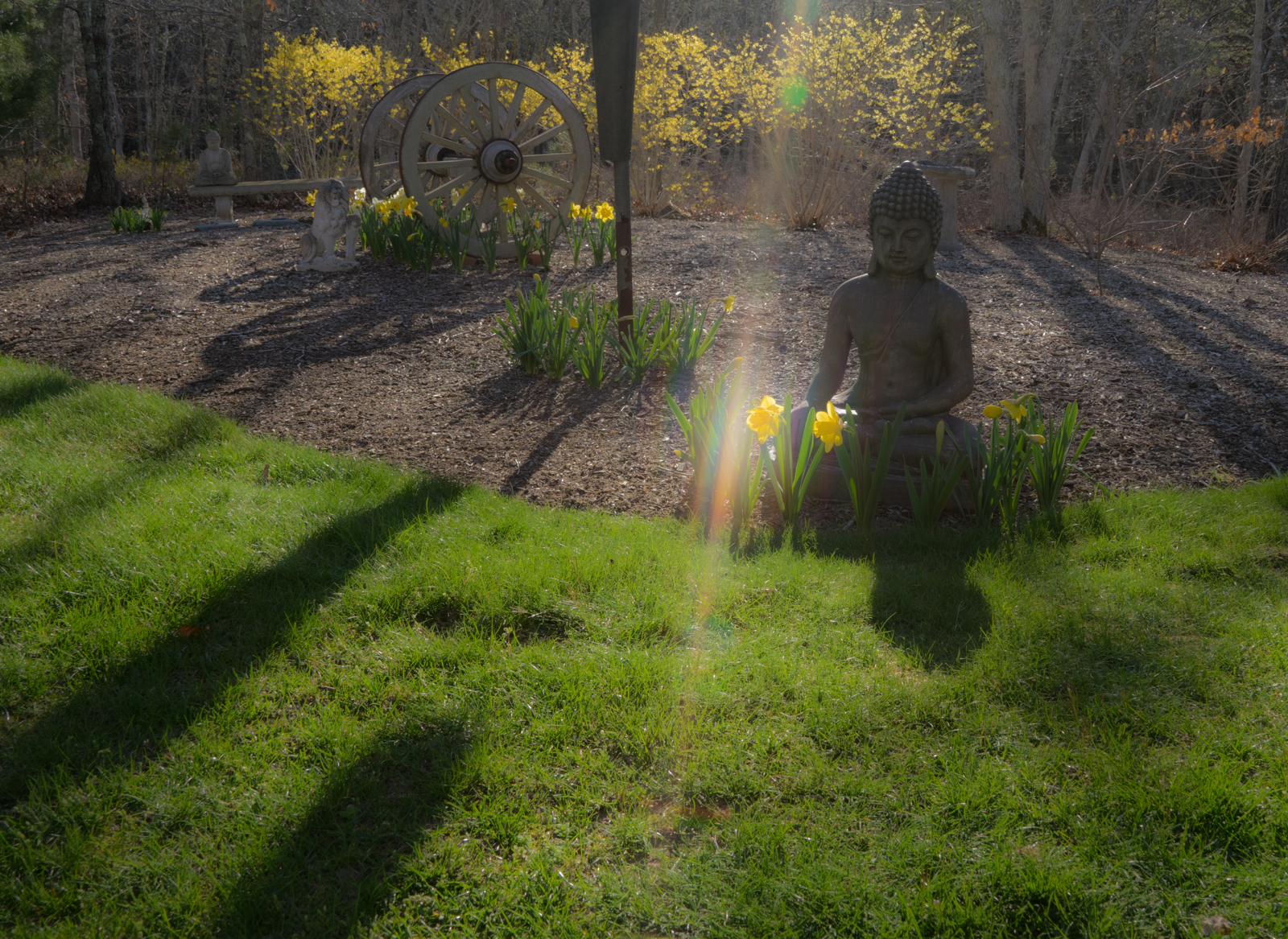Last Saturday, we continued to explore the first two of the four skills a meditator needs to develop. These first two are calming and steadying the attention, and the ability to move closer to experience. The third and fourth skills, which we will explore next month are the ability to move farther away from experience, and keeping the three universal characteristics in mind (change, unsatisfactory nature of things, selfless nature or interconnected nature of things).
Being that the other three skills rest upon the first one, it’s is important for us to really get just how essential this first skill is. Training the mind to be present is not an easy thing, and discouragement and doubt can easily arise. We want to find a way to come back to the practice of steadying the mind again and again that does not feel driven or forced. Understanding the importance this first skill plays in the entire Noble Eightfold Path is the way to do this. We can then attend to this aspect of the training with interest, energy, and balance.
People who meditate often feel as though they are not making any headway with this first skill. All they notice is how busy and distracted their minds are. While it may be that the mind spends much of its time during meditation being distracted, it doesn’t spend all the time being distracted! One of the most important things one can do to cultivate this first skill is to notice when it’s happening. Make it your intention, and in time, get into the habit of noticing when your attention is actually on the meditation object. It actually happens a lot. What is that experience like? How does it feel in the body? In the mind?
Once we can begin to tune in to these moments of mindfulness, two things happen. First is that the mindfulness gets strengthened through it being noticed. This is part of wise effort. That is, cultivating wholesome mind states that have already arisen. How do we do that? By being aware of them. The second thing that happens is we start to experience just how lovely it is to be present and not distracted. We start to feel like we are right where we want to be. Right at home. Now, we have a really good incentive for continuing on with the practice and maintaining motivation even in the face of difficulty or feeling like we’re not getting anywhere. We now see the benefits of the practice and want to do it, rather than feeling like we should.
So, pay attention to the moments you’re connected to body, breath, or whatever you may be using as your main meditation object. The benefits are both immediate, and onward leading.

